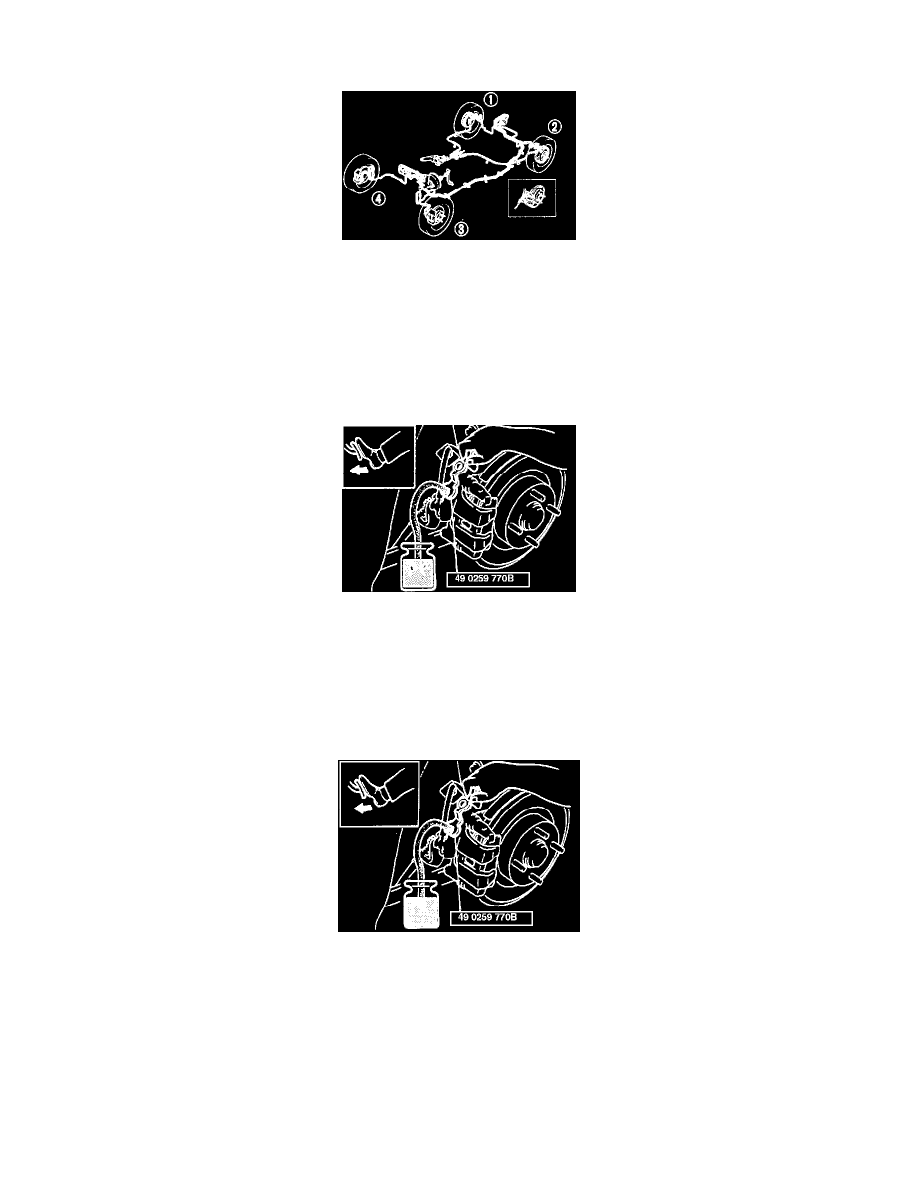Protege L4-1839cc 1.8L DOHC (1990)

Brake Bleeding: Service and Repair
AIR BLEEDING
Note: The brakes should be bled whenever a brake line has been disconnected. Air bleeding must be done from the bleeder screw farthest from the
disassembled parts to the nearest.
-
If a hydraulic line has been disconnected at the master cylinder, start at the slave cylinder farthest from the master cylinder and move to the next
farthest, until all four cylinders have been bled.
-
If the disconnection is anywhere besides the master cylinder, start at the slave cylinder closest to the disconnection point and move to the next
closest, until all four cylinders have been bled.
1. Jack up the vehicle and support it with safety stands.
Caution: The brake fluid reservoir must be 3/4 full during air bleeding.
2. Remove the bleeder cap and attach a vinyl hose to the bleeder plug.
3. Place the other end of the vinyl tube in a clear container.
4. One person should depress the brake pedal a few times, and then hold it in the depressed position.
5. A second person should loosen the bleeder screw, drain out the fluid, and retighten the screw with the SST.
Caution:
-
The two persons should stay in voice contact with each other.
-
Be sure the pedal remains depressed until the air bleed screw is tightened.
6. Repeat steps 4 and 5 until no air bubbles are seen.
7. Check for correct brake operation.
8. Verify that there is no fluid leakage. Clean away any spilled fluid with rags.
9. After bleeding the air, add brake fluid to the reservoir up to the specified level.
Tightening torque: 5.9 - 8.8 Nm (60 - 90 kgf.cm, 53 - 78 in.lbf)
